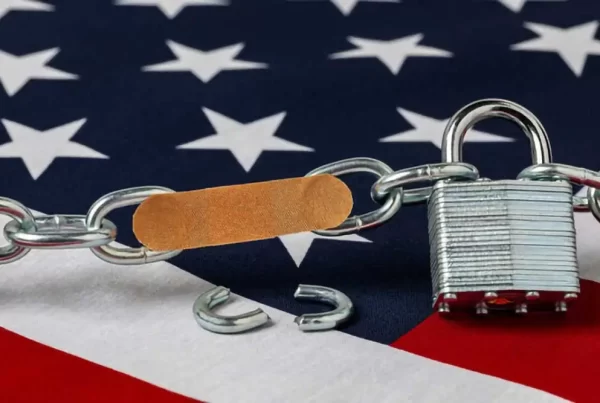Most normal human beings have no idea what the “Permanent Bar” is. But, for immigrants and immigration lawyers, it is the one thing stopping millions of immigrants from legalizing their immigration status through the “normal” process. Indeed, the Permanent Bar is perhaps the most negative and harmful immigration statute on the books in 2023.
A brief history lesson is necessary to explain why the Permanent Bar came into existence. In 1986, Congress had passed an “amnesty” and allowed amnestied individuals (mostly Mexican men) to petition for green cards for their families. They did this without understanding the obvious: that there would be a decades-long line for the families of these men to receive their own green cards and that these men would take other, higher quality jobs with their newly furnished green cards–thereby creating an even larger rush of undocumented immigration to the US to backfill low-wage positions. These problems were all foreseeable, but Congress chose to ignore them. From 1990 (when the 2.5 million amnestied men received their final green cards and supposedly solved the “immigration crisis”) to 1996, there was an increase in the number of undocumented immigrants in the United States to five million: the opposite of the intended effect of the 1986 amnesty. By 1996, the mood in Congress was to shut down all immigration because of the increase in undocumented immigration.
This brings us to what is known as “IIRAIRA”. In September 1996, Congress passed the Illegal Immigration Reform Act and Immigrant Responsibility Act (“IIRAIRA”). It passed two years after Republican Pete Wilson won gubernatorial reelection in California on an anti-immigration platform. Using the playbook of Pete Wilson, Newt Gingrich passed IIRAIRA through Congress and Bill Clinton signed it into law. It is IIRAIRA that brought the Permanent Bar into existence.
IIRAIRA rewrote all “enforcement” aspects of immigration law. There are three key changes that were both harmful to immigrants and, ironically (since the Act they were a part of followed the pattern of the 1986 amnesty), caused illegal immigration to grow.
First, IIRAIRA eliminated the ability of U.S. Citizen spouses, relatives, and employers sponsoring an undocumented immigrant to have that immigrant receive their legal residence in the United States through “adjustment of status”—forcing everyone who had come in illegally to leave the US and go to an interview at a U.S. Consulate to obtain their “permanent residence”. On its face, this might seem fair, but it had intentionally terrible consequences as evidenced by the other two changes.
The second key change of IIRAIRA was to make it so that an immigrant who had come to the country illegally or overstayed their visa for longer than six months (unlawful presence) after September 30, 1996 (when IIRAIRA was signed by Clinton) and then left the US would have a 3-year bar before they could return legally. If the immigrant entered illegally and stayed for over year or a person overstayed their visa for more than a year (unlawful presence) and then left, they would suffer a 10-year bar before they could return legally. Both of these bars can be forgiven if the foreign national has a spouse or parent that is a U.S. citizen or lawful permanent resident and they can prove that such “qualifying relative” will suffer “extreme hardship” in the absence of the immigrant; but there were very few people at that time who actually qualified for the waiver. One good exceptions clause to these two bars is that the bar only applies to those who are over the age of nineteen when they leave the US since children under eighteen (for purposes of this bar) do not accrue “unlawful presence”. Again, very harsh penalties; but at least (to an extent) forgivable.
The third (and worst) thing that Congress did through IIRAIRA was create the Permanent Bar. This lifetime prohibition on securing permanent residence is activated when someone has entered the US illegally and remains longer than one year in the US or overstays a visa by longer than one year. When they leave, they activate the 10-year bar (as noted above). But, if they re-enter illegally before the 10 years pass (something quite common in 1996 and through around 2008 for mostly Mexicans) they are now barred for life from immigrating to the United States. Sadly, virtually no one besides immigration lawyers were aware of this harsh consequence for decades.
The worst part of this bar is that it can legally be applied to children. If a child enters with their parent illegally (which was very common after the amnesty when mom and kids came to join green-card-holding dad), the parents then leave with the child (perhaps to visit a grandparent or because of a death in the family), and then they all reenter illegally, on reentry both the parents and their child(ren) now have the Permanent Bar–a wildly unjust result and one that could be subject to a different interpretation yet neither the Biden nor Obama administrations have made efforts to revise this interpretation.
What is insidious about this application of this particular law is that tens of thousands of DACA recipients are subject to the Bar and cannot legally immigrate (as many of their peers can) since this law–found in INA 212(a)(9)(C)–prohibits them. What is more, it does not matter if your child joins the military or they are terribly ill. It does not matter if you are a single parent or a caretaker for your citizen parent. It does not matter if you paid your taxes for 25 years or if you have lived a perfect life. It does not matter if you own a business and employ hundreds of US Citizens. Regardless of these considerations, you would still fall into the legal maw of the Permanent Bar.
Like any immigration rule, there are exceptions. There are only four ways to avoid the terrible impact of the Permanent Bar:
- Live outside of the country for ten years and then apply for a waiver
- Be the beneficiary of a U-Visa for victims of crimes.
- Be the beneficiary of a T Visa (a victim of sex or labor trafficking); or
- Be in deportation proceedings and have an immigration judge grant you a cancellation of removal (4,000 people a year qualify for this relief, by law)
It is estimated that up to 5 million people are victims of the Permanent Bar. If there was one change that Congress could make today that would positively impact the lives of the most immigrants (potential or actual) it would be to repeal INA 212(a)(9)(C).
If you have any questions regarding this or other immigration questions, call the attorneys at Kuck Baxter–Leaders in Immigration.






